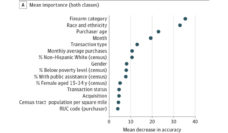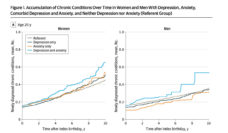Individuals experiencing a mental health crisis are at risk for self-harm and can sometimes need immediate mental health treatment. But, when first responders lack adequate training to manage someone experiencing a mental health crisis, they are more likely to arrest this person than refer them to treatment. While crisis services were a core component of the community behavioral health system established by the 1963 Community Mental Health Act, these programs have never been available in many communities. The new behavioral health crisis hotline, 988, is one of the largest efforts undertaken nationally to improve access to mental health care for individuals in crisis. Yet, it is unknown how community access to crisis services will change in response.
Crisis intervention teams are one of three core components of effective behavioral health crisis care systems. Though most hotline calls can be managed by phone, 10% to 20% require an in-person response. In these cases, crisis teams are sent to assess the caller and transport them to an emergency department or other treatment facility, if necessary. Approximately one in three in-person visits with a crisis team lead to transportation to treatment services. Encounters handled by untrained law enforcement are more likely to result in arrest than referral to treatment. In communities without crisis intervention teams, the 988 hotline calls may be answered by police and result in arrest rather than treatment.
Local demographic factors likely impact how and whether communities are able to access crisis intervention teams. Crisis intervention teams may face difficulties operating in rural counties, for example, because of the cost of driving long distances to meet clients. State policies could also impact community access to crisis intervention team services. For example, states that have not expanded Medicaid eligibility to cover low-income childless adults – a population with significant mental health needs – may be less likely to offer crisis intervention services, because the patients seeking care for these services would be uninsured.
To help states tailor their outreach and implementation efforts for 988, my colleagues and I assessed access to crisis intervention teams. We used the National Directory of Mental Health Treatment Facilities, a survey that asks all mental health facilities nationally whether or not they offer crisis intervention team services, to determine the percent of U.S. counties with and without access to crisis intervention teams in 2015 and 2020. We then examined whether county characteristics – including suicide mortality, rurality, and other demographic characteristics – or state Medicaid policies predicted access to crisis intervention team services in 2020.
We found that half of U.S. counties did not have access to crisis intervention team services in 2020.
We found that half of U.S. counties did not have access to crisis intervention team services in 2020. Despite encompassing half of all counties nationally, these counties were sparsely populated and included just 12% of the population. These counties were more likely to be rural and a greater percentage of their population were uninsured.
Most of the state Medicaid policies we studied were not associated with access to crisis team services, with one exception. Counties in states that did not expand Medicaid before 2020 were less likely to have access to crisis intervention team services (52% vs. 68%).
Our study has several limitations. We may underestimate access to crisis intervention teams because some facilities choose not to be listed in the directory, even though they may offer crisis intervention services. Additionally, the directory does not include police departments even those these departments occasionally offer crisis intervention team services.
The 988 hotline has the potential to transform how and whether communities nationally access mental health crisis services. But because one in 10 calls require in-person attention, successful implementation depends on local access to crisis intervention teams. In this study, we found that rural counties are especially in need of crisis resources. Developing crisis intervention models tailored to rural communities is essential to see the true potential of 988.
Photo via Getty Images














